A cat's stomach after castration is protected with a bandage with straps so that the animal does not lick the wounds. The cat is fitted with a collar.
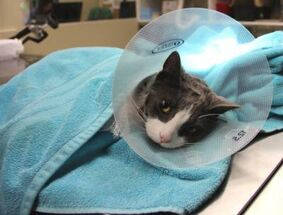
- A cat after anesthesia – how long does a cat recover from anesthesia, how to organize care after anesthesia
- How anesthesia affects the cat
- How diving in and out of anesthesia is performed
- Why anesthesia is nothing to be afraid of
- How to reduce the risks of complications
- How does the cat feel during surgery? [ ]
- How long will the pet "sleep?" [ ]
- How does a cat come out of anesthesia?
- Transferring a cat from the veterinary clinic to home
- The first 24 hours
- Care after anesthesia
- 🐱How to take care of a cat or cat after anesthesia
- Mechanism of action of anesthesia on a cat
- Possible complications after anesthesia
- Spaying and neutering of cats – review
A cat after anesthesia – how long does a cat recover from anesthesia, how to organize care after anesthesia
Anesthesia – a frightening word for any pet owner. Sometimes general anesthesia scares the owners of cats more than the surgery itself. The main thing that scares pet owners is the fear that the pet will not come to its senses after anesthesia.
The owner's anxiety can be helped by understanding important aspects – how anesthesia affects the pet, how the pet comes out of this state, and how to correctly organize postoperative care.
How anesthesia affects the cat
Modern drugs used by veterinarians to induce anesthesia in animals do not have a pronounced tendency to depress the functions of vital organs, and the elimination time of narcotic substances is rapid.
There is no need to refute the fact that anesthesia is a serious strain on the cat's body. First of all, it is a strain on the cardiovascular and respiratory systems. To minimize such a notion as anesthesia risks, the doctor selects the dosage of the drug individually, taking into account the peculiarities of the body.
Putting a cat under anesthesia allows the specialist to carry out not only surgical interventions, but also a number of other manipulations. For example, no cat will behave quietly during an ultrasonic teeth cleaning or during tooth extraction. The anesthesiologist selects the optimal concentration of the drug for the animal's smooth entrance into anesthesia and the same smooth exit.
The mechanism of action of anesthesia on a cat also depends on the presence of internal pathologies. Therefore, preoperative preparation of the animal necessarily includes a thorough examination of its body.
- Measurement of the pulse, body temperature and blood pressure of the animal;
- examination of the oral cavity and palpation of the peritoneal area;
- ultrasound examination of internal organs for the timely detection of pathological conditions;
- blood sampling for general and biochemical analysis (if necessary);
- urinalysis;
- ECHO heart to assess the condition of the cardiovascular system.
General anesthesia implies a complete loss of sensitivity and weakening of muscle tone with parallel anesthesia. During surgery, the animal feels no pain. Even in those rare cases when the cat wakes up on the operating table.
How diving in and out of anesthesia is performed
Modern technology has advanced both in human and veterinary medicine. Anesthesia of an animal is carried out not in one but in several stages.
Initially, the patient should be examined by an anesthesiologist and only after the cat's condition is satisfactory should premedication be performed. It is a procedure of introducing a number of drugs allowing to decrease the negative effect of the main substance during anesthesia. Premedication necessarily includes sedatives.
Next, a catheter is inserted into the animal. Anesthesia is administered intravenously through the catheter and then the dose of the substance is adjusted as necessary in the course of the surgical intervention. For short-term and light surgical interventions, anesthesia is administered intramuscularly. Technically, the procedure is not complicated, but the effect of the anesthetic agent on the animal's body is much more difficult to determine.
The most popular and proven method of rendering an animal unconscious is intravenous injection. Such anesthesia is used for long-term surgical manipulations. The amount of narcotic substance is much easier to regulate, since the substance enters the bloodstream immediately. Therefore, it is easier to calculate the minimum dose needed for anesthesia.
There is also gas anesthesia but it is used less frequently by veterinarians due to a number of peculiarities. This type of anesthesia is considered more gentle, but in fact it is not quite true. After all, the same hypnotic substances are used, only in the form of gas, which depress the central nervous system.
Anesthesia in an animal may last from 15 minutes to as long as a day. This depends directly on the characteristics of the animal's organism (age or metabolic processes), as well as the duration of the surgical intervention and the anesthetic used.
After coming out of deep anesthesia, the cat may see hallucinations, meow, shake its head or bump into objects. The owner's job is to keep the environment as safe as possible. It is also important to watch for any changes in body temperature, since after anesthesia the body is not capable of full heat exchange. The cat should be given complete rest and covered with a warm blanket. Water and drink are prohibited during the first few hours after anesthesia. Offer food only when the cat is in complete control of its movements. The best solution in the first hours after surgery is not to take the cat home, but leave it in the clinic for observation.
Why anesthesia is nothing to be afraid of
Pet owners should absolutely not be afraid of the upcoming anesthesia for their pet.
Many owners are worried about their pets and do not want to expose them to the risks associated with anesthesia.
Anesthesia is not as dangerous as the pet owner might think. The more dangerous conditions are the severe pain the animal feels, fear and stress. Severe painful sensations provoke changes in blood pressure readings. If the cat is injured and does not allow himself to be examined by a veterinarian, the best solution is to sedate him. Otherwise, myocardial ischemia may develop due to constriction of blood vessels and severe pain.
By not wanting to anesthetize the animal for procedures such as CT scans or X-rays, the owner may encounter even more problems. The fact is that when a cat is in severe pain, it is in a state of shock. This changes the respiratory rate, which in turn puts extra strain on the lungs and the respiratory system as a whole. All this can cause oxygen starvation of the body, up to complete respiratory failure. It is noted that with painful feelings in the body begins to produce an increased amount of stress hormone – cortisol, which in combination with other hormones – aldosterone, renin, antidiuretic hormone, provoke increased blood clotting.
Stress in a cat is often the cause of a weakening of the immune system against a background of leukocytosis and lymphopenia. It has been proven that the stress and pain experienced by an animal during pathology has a much stronger negative effect on the cat's health than anesthesia.
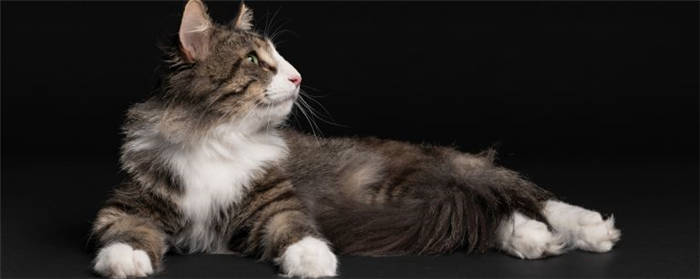
Due to the high volume of questions coming in, free veterinary consultations have been temporarily suspended.
How to reduce the risks of complications
After coming out of anesthesia, a cat needs as much attention and observation as before. For the first few hours after anesthesia, the animal is unable to maintain a normal body temperature. To prevent hypothermia, you should additionally warm the animal with warm blankets or warmers.
It is important to create comfortable conditions for waking up. To do this, place the cat in a room isolated from noise and bright light. You should not immediately try to take the pet home before it is fully awake. It is desirable for the pet to stay under the supervision of specialists for some time.
For the first 4 hours after coming out of anesthesia the cat looks weak and disoriented. You should try to watch the cat's breathing and the condition of the mucous membranes until its full recovery.
To reduce the risk of complications, you should not give the cat water or food right away. Only wetting the tongue with water is allowed.
The time it takes for an animal to fully emerge from anesthesia depends on many factors – the overall condition of the cat before surgery, the severity of the surgery, and the quality of the anesthetic agent used.
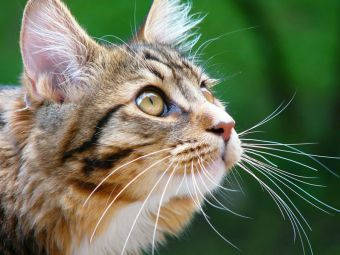
Due to the high volume of questions coming in, free veterinary consultations have been temporarily suspended.
How does the cat feel during surgery? [ ]
General anesthesia is not only about "sleeping" but also about complete loss of sensation. Veterinarians use entire regimens using a number of medications, as the cat sometimes comes out of anesthesia right on the operating table. It is an extremely rare case, but it is vitally important that at this moment the cat feels no pain and its muscle tone is weakened. So you don't have to worry – during surgery the pet will feel absolutely nothing, even if it wakes up from "sleep" for a while.
Veterinarians recommend leaving pets in the hospital for at least twelve hours. The main advantage: a professional knows how to get the cat out of anesthesia in case of complications with the respiratory or cardiovascular system.
Being under the care of the doctors the cat will surely receive the qualified help in time if it is needed. Also, sensitive owners save the nervous system from anxiety (for themselves as well as for the cat). Often a cat's behavior after anesthesia seems inadequate, abnormal, painful and requiring immediate intervention. Some owners, relying on intuition, begin to "help" the cat without going to the vet, with dire consequences.
How long will the pet "sleep?" [ ]
How long anesthesia in cats lasts and how quickly the pet fully recovers depends on many factors. First and foremost is the type of drug and the method of narcotic sleep administration. Short-acting preparations make it possible to quickly achieve the condition required for the operation and stop affecting the body in the shortest possible time. They are used in cases where a simple manipulation is required (castration, removal of tartar, tooth extraction, claw trimming in aggressive animals, etc.). Modern gas anesthesia for cats allows to control the cat's condition during the operation and bring the whiskered patient to his senses in a short period of time. As a rule, the pet wakes up while still in the doctor's office or on the way home. Deeper anesthesia lasts from two to eight hours (depending largely on the dosage and the individual body's reaction).
When leaving the clinic, do not forget to ask the veterinarian how long the cat will be out of anesthesia, in case the drug is tolerated normally. Since the timing varies considerably, you should clarify this point in order to notice possible complications in time. The first hours The first 24 hours of the post-operative period are considered critical, during which the owner should monitor the cat's condition. When you come home, you should put your pet on the floor in a quiet place, away from heating radiators and drafts. Putting a sleeping cat on the bed is not allowed, it may fall and hurt itself.
The typical behavior of a cat after anesthesia is a cocktail of mixed negative emotions. Gradually coming to its senses, the cat looks deeply unhappy, all the time trying to go somewhere, staggering, hardly holding its head, crashing into walls, unable to get into a doorway. It is painful and frightening to watch, your heart aches with pity, but it is important to pull yourself together and realize that all this is the norm. Until the muscle tone is restored, you should keep your pet from wandering around the apartment or jumping on the furniture: affection, quiet conversations and light petting will certainly help, as long as the pet does not show aggression. Sudden aggression in a cat after anesthesia is also normal. The pet is disoriented, her paws do not obey her, it is difficult to concentrate attention, calculate the distance, it is difficult to assess the situation in general. A cat is frightened, trying to climb up or hide deep under the bed, and the owner not only does not allow her privacy, but also constantly climbs with a thermometer, feeling the nose and ears, trying to impose in every possible way. How not to get angry? To decrease the emotional pressure you should draw the curtains, ask your family to be quiet and not to approach the cat unnecessarily, watching its actions from aside.
How does a cat come out of anesthesia?
If the veterinary clinic does not provide a post-operative hospital service, or if the owner wants to be with the cat while he wakes up and recovers from anesthesia, the cat may be taken home earlier. However, you should not be in a hurry to leave the vet clinic.
Most of the complications associated with coming out of anesthesia occur in cats in the first 3 hours after surgery. It is during this period that the cat's condition must be monitored constantly so that, if necessary, it can be treated quickly. The veterinarian monitors the cat's heart rate, pulse quality, frequency and nature of respiratory movements, oxygenation, blood pressure and body temperature until these indicators return to normal values.
When transferring the cat to the owner, the vet will be sure to give him a detailed statement, which includes medical appointments and recommendations for post-operative care.
Transferring a cat from the veterinary clinic to home
Usually when handed over to the owner, the cat is conscious and responsive to sound and touch, but shows noticeable drowsiness and impaired movement coordination. Some cats may show signs of agitation and even aggression while coming out of anesthesia. To transport the cat home, you should provide the cat with an enclosed carrier in which it will feel calmer.
The owner should consider that the cat's body temperature drops during anesthesia and will need warmth after surgery. You should put a bed on the bottom of the carrier that is thick and warm enough and have a diaper or small blanket ready to cover the cat. In some cases you may need a hot water bottle or a plastic bottle with warm water wrapped in a towel to replace it.
When the cat is under general anesthesia, there is no blink reflex. Until it is restored you may periodically put saline solution or an artificial tear into your cat's eyes or gently close its eyelids with your fingers to prevent the cornea from drying out.
The first 24 hours
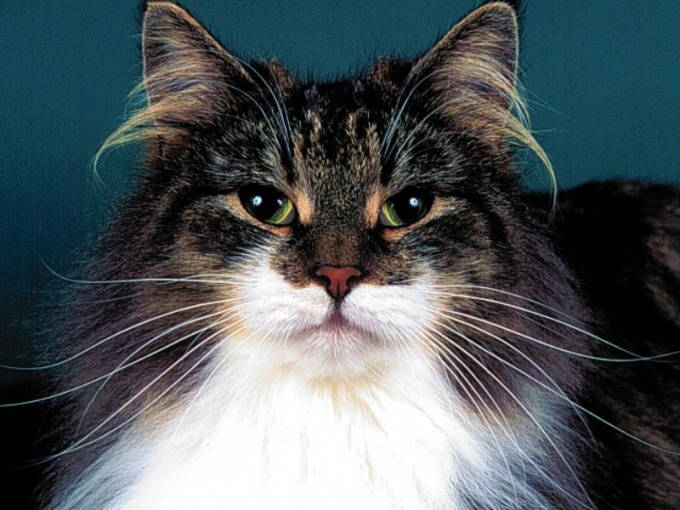
After the operated cat returns home it should be placed on a warm bed placed on the floor and the room should be draught-free. The animal should not be placed on a sofa or an armchair after anesthesia, since its movements at this time will not be coordinated, which may cause the cat to fall from a height. There should not be any sharp or hot objects on the floor, wires and strings, or other things in which it could become entangled.
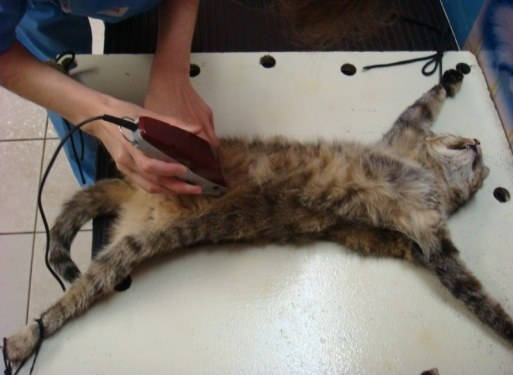
After anesthesia the cat should only lie on its right side, since lying on the left side puts additional strain on the heart after the operation.
It is very important to make sure that the cat's eyes do not dry out. After the operation the cat will not be able to blink on its own, so you should put a special solution under its eyelids and close/unclose them with fingers every half an hour until the cat starts blinking on its own. She will also have a dry mouth – wetting the tongue with water or carefully pouring drops of water from an eyedropper into the mouth will help – but very carefully so that the cat does not choke. It may be noticed that after anesthesia the animal may behave inappropriately, it is connected to its disorientation and is normal in most cases. However, if the cat is in bad shape you should call the veterinarian, who has performed the operation.
Care after anesthesia
The cat may be suffering from involuntary vomiting or urination while it is coming out of anesthesia, so you should watch it very carefully – if it starts to lick itself constantly, you should put some newspaper or a sack under it. Feeding can only begin after 24 hours, and the poor appetite of the animal may continue for several more days. It will be possible to feed the cat completely after 3-4 hours.
After sterilization, the cat is fitted with a special blanket, which it will have to wear for 10-14 days until the stitches are removed.
In order to treat the healing stitches, you should regularly remove this blanket from its hind legs and put it back on immediately after treatment, so that the cat does not lick the stitch wounds. In addition, you should be careful that the animal does not try to jump on high ground, since his weakness may prevent him from jumping up and catch on something with the blanket and hang in it. Naturally, the cat will begin to wriggle, trying to get out, and as a result the stitches will simply come apart.
- How to spay a cat
- How to tie a cat's harness
- How to decide to put an ill cat to sleep
- How to prepare a cat for neutering
- How to sterilize a cat
- What does it mean to spay a cat
- How to remove a cat's claws
- What to do if a cat cannot give birth by itself
- When best to sterilize a cat
- How cats behave after neutering
- How to castrate a cat at home
- How a cat always falls on its paws
- Can a cat that has not given birth be spayed?
- Is it worth spaying a cat?
- How to get out of anesthesia
- How to get a cat out
- How to treat wounds in a cat
- How to get out of anesthesia after surgery
- How to castrate a cat
- Is it worth neutering a country cat
- Do spayed cats want a cat
- "Renal Evansed" (for cats): indications, use, reviews of owners
- "Uteroton": instructions for use in veterinary medicine
🐱How to take care of a cat or cat after anesthesia
To avoid hormonal outbursts in pets – gonation in cats and heat in cats, as well as the appearance of unwanted offspring – cats are neutered or spayed.
With cats, everything goes pretty quickly. With cats it is a little more complicated.
If after the operation the vet offers to leave the cat for a day or two under the supervision of the staff for a fee, it is better to agree.
When there is no such possibility or suggestion, you will have to act on your own.
Mechanism of action of anesthesia on a cat
In veterinary practice, specialists use several types of anesthesia for cats. In each specific situation, the anesthesiologist selects the most gentle anesthesia.
In modern veterinary medicine, intravenous or inhalation anesthesia is more commonly used.
- Initially the doctor performs a complete examination of the animal and prescribes additional tests.
- 10-15 minutes before anesthesia is administered, the animal is given premedication or preparation. Intramuscularly or subcutaneously, medications are injected – sedatives and those that prevent cardiac arrest.
- After premedication, the doctor inserts an intravenous catheter and administers anesthesia.
- A tracheal intubation is performed – a special tube is inserted so that the animal can breathe comfortably during the surgery. Oxygen is administered through the tube.
- Ten minutes before the end of the operation, while the surgeon is suturing, the anesthesiologist begins to reduce the amount of anesthesia going into the animal's body. By the last stitch, the animal can already breathe on its own.
The three main components of a complete anesthesia are sedation, anesthesia, and analgesia.
Anesthesia is a reversible loss of consciousness. If only analgesics (anesthetics) are used, the animal will not feel anything, but it will not allow the surgery to proceed normally. Anesthetics are important to keep the animal asleep and still.
Possible complications after anesthesia
There are risks associated with all types of anesthesia. With the competent work of specialists, complications during and after anesthesia are extremely rare.
The risks of complications depend on the type of anesthesia used, the patient's condition, and the body's individual reaction to the drugs.
- Vomiting or regurgitation of gastric contents. The reason for this is the fact that after coming out of anesthesia, the animal's consciousness is still impaired. Some reflexes are not yet fully controlled. The animal cannot swallow saliva or mucus accumulated in the mouth.
- Aspiration pneumonia. Aspiration syndrome develops as a result of gastric contents being thrown into the lungs. Pneumonia may develop . Therefore, doctors strongly recommend not feeding the animal before the planned operation and keeping it on a starvation diet. As a last resort, gastric lavage is performed to the cat before emergency surgery.
- Tongue protrusion. While unconscious and coming out of anesthesia, the animal may not be able to control all body muscles normally. The tongue may protrude, obstructing breathing and normal lung ventilation.
- Hypothermia. Impaired body thermoregulation after prolonged anesthesia is considered one of the most common types of complications. After anesthesia it is important to monitor the cat's body temperature and, if necessary, to warm it up additionally.
- Delayed stools. After anesthesia, the cat may become constipated . During surgery and the effects of anesthesia, intestinal peristalsis is disturbed. To restore it, the specialist prescribes lactulose or Vaseline oil.
During the postoperative period, until the animal is fully awake, specialists closely monitor the patient's condition to reduce the risk of complications from anesthesia.
Spaying and neutering of cats – review
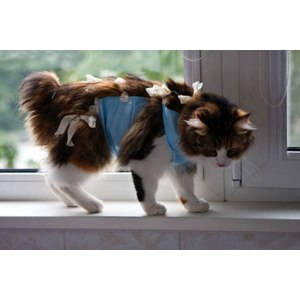
In the life of every pet fluffy there comes a moment X, when the owner decides: to spay the cat or keep the kittens. My Marusenka I received as a gift from a neighbor, we communicate with him well, and the man knows that this year I was not easy. Decided to encourage me with such a gift, especially since I always said I wanted to have a four-legged friend.
- Age 9-10 months.
- Kitty's nipples are swollen.
- She was always sitting at the door and meowing in a loud, inviting way at night. And it did not go away, and she meowed more and more. From about 4:30 to 7:30. Nothing could distract my Marusya: no toys, no food, no scratching.
- The cat started walking past the litter box, she had never missed before.
- She is usually very affectionate and tame, loves to sit on my lap or under my arm for hours, but suddenly she turned into a monster. She started biting my arms, legs, scratching my back – it was scary to look at my hands. She was throwing herself right in my face, aiming at my eyes, it was very dangerous.
The vet said that all this is a sign of impending heat, and we must make an urgent decision: either let her out on the street or spay her. We chose the second option, because kittens have nowhere to go. And to drown them as we do in the countryside at our dacha, no strength ((( If you want you can put a mark on the cat passport about the operation.
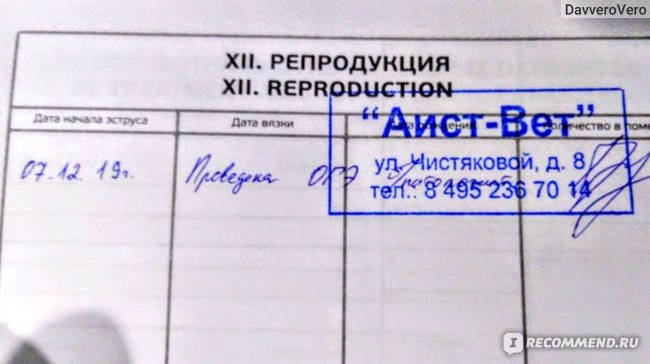
In April I had a laparoscopic female surgery (ovarian cyst, endometriosis). I knew that my cat would be in pain, and I was very nervous. I tried to make her as happy as possible before the surgery.
We were checked to see if she had all her vaccinations, when she was last wormed and everything. We checked her passport and weighed the cat – 3.25 kg. We started to agree on price. I don't remember the exact price, it was something like that. Spaying was 3500, 500 p's worth of premedication, 1500 – a milder anesthesia to help the cat come out of a deep sleep, 1000 – cosmetic suture. Kitty had everything removed (uterus, ovaries, etc.) – she had an ovariohystectomy. She had her abdomen shaved and a small area on her right paw where the IVs were placed.






